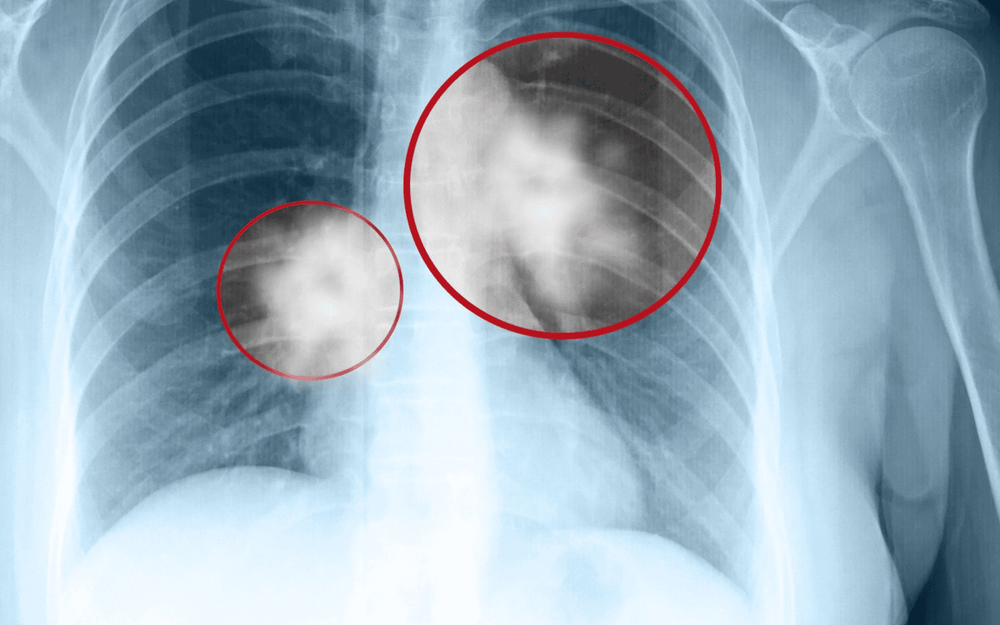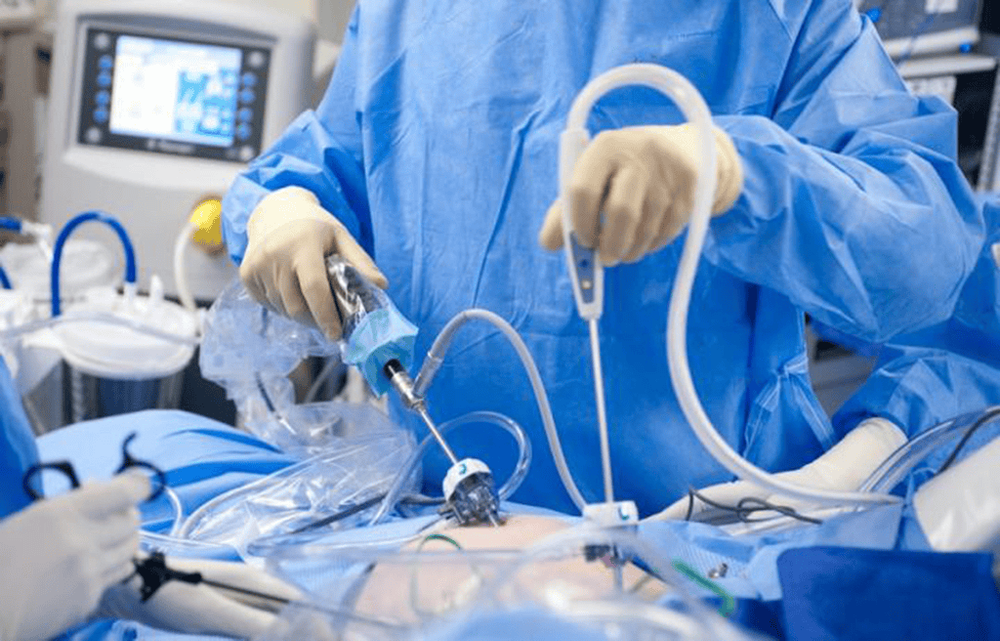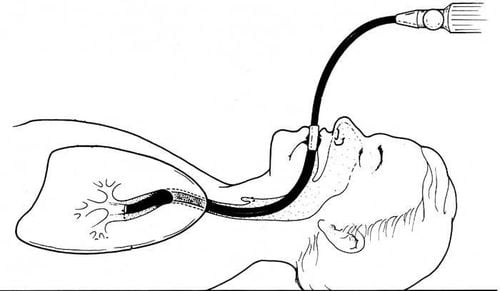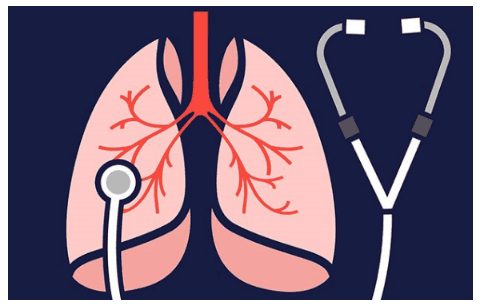This is an automatically translated article.
Early diagnosis is important in the timely detection and treatment of lung cancer. Among the diagnostic methods, lung cancer x-ray has high accuracy, making it easier for doctors to detect abnormal tumors in the patient's lungs.1. Methods of diagnosing lung cancer
History and clinical examination: the doctor will ask the patient about the family history of the disease and make an initial examination through observation, auscultation,... X-ray detection of lung cancer: is a method scan the organs and bones inside the chest. An X-ray is a type of energy beam that passes through the body and shows an image of an area inside the body on an x-ray. This method can detect abnormalities or tumors on the lung but can miss tumors that are too small. Therefore, besides X-ray for lung cancer, patients are often indicated in combination with chest CT scan.

Chụp X quang ung thư phổi
Computed tomography of the chest (CT scan): is a method of using X-rays to create cross-sectional images of the chest and upper abdomen, helping doctors detect pathologies in the ribs, pleura, and paresthesia. Lung tissue, bronchi, blood vessels, heart, mediastinum,... In particular, this method can detect small lesions less than 1mm in size, more effective than radiography of lung cancer. Sputum test: A microscopic examination of sputum helps the doctor to detect cancer cells. However, because this test is not sensitive, your doctor may order additional tests if the sputum test is negative and lung cancer is suspected. Bronchoscopy: is a method of using a flexible lighted bronchoscope inserted into the windpipe through the nose. A small sample of the tumor suspected of containing cancer will be biopsied under a microscope. Before the procedure, the patient will be put to sleep or sprayed with a local anesthetic to reduce discomfort. Transthoracic biopsy: under the guidance of CT scan, the doctor will use a needle to poke through the patient's chest to take a sample of the tumor suspected to contain lung cancer cells to make observations under the microscope and diagnose the disease. exactly. Thoracic surgery: is an invasive procedure so the patient will be under general anesthesia. Thoracoscopy is similar to bronchoscopy, but the scope is inserted through an opening in the neck, allowing the doctor to check the mediastinal lymph nodes for cancer.

Phẫu thuật nội soi lồng ngực chẩn đoán ung thư phổi
2. Diagnosis of lung cancer at Vinmec Hospital
Vinmec International General Hospital is providing a Lung Cancer Screening Package that includes in-depth consultation with oncologists and modern imaging (low-dose CT scan).
Lung cancer screening package for:
Customers are male or female, over 50 years old. Customers need periodic health check-ups to detect lung cancer early. Customers are at high risk for cancer, especially customers with a family history of cancer, for example lung cancer. Customers are regularly exposed to factors that increase the risk of lung cancer such as regular smoking (smoker for more than 25 years or has quit smoking for less than 15 years). Customers work in polluted air environment, many toxic chemicals.

Tầm soát ung thư phổi tại bệnh viện Vinmec
Reasons to be screened for lung cancer at Vinmec
Vinmec Hospital has been a prestigious address in lung cancer screening with the following advantages:
Highly qualified, enthusiastic, rich medical team experience. Comprehensive professional cooperation with leading hospitals in the country and countries such as Japan, Singapore, USA,... Comprehensive treatment, patient care, multi-specialty coordination towards individualizing each patient . Fully equipped with specialized facilities to diagnose the disease and stage it before treatment: X-ray of lung cancer, endoscopy, CT scan, PET-CT scan, MRI, gene - cytology cytology, histopathological diagnosis,... There are a full range of mainstream cancer treatment methods including: surgery, radiation therapy, chemotherapy, stem cell transplantation,...
Please dial HOTLINE for more information or register for an appointment HERE. Download MyVinmec app to make appointments faster and to manage your bookings easily.













